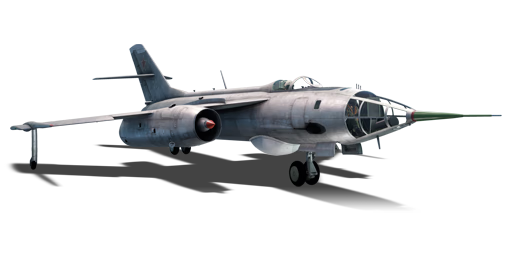



The Yak-28B (NATO Codename: Brewer-A), perhaps the last combat jet developed by Yakovlev to join the VVS, was also the first supersonic frontline bomber of the VVS. The design of the Yak-28 was based on the Yak-26 (Yak-123) to meet a VSS call for a new supersonic bomber with better payload and speed. These jets were produced from 1960 to 1971 in Irkutsk. Although designated as a supersonic frontline bomber, the interceptor variant (Yak-28P, codename Firebar) was the most produced variant of Yak-28 family. The Yak-28B was the tactical bomber variant with Lotos radar and was produced as one of the earliest mass-produced variants of the family.
The Yak-28B was introduced in Update "Red Skies". Although the honour of being the first Soviet supersonic bomber might sound pleasing, the overall payload is only barely better than some of its NATO subsonic attacker counterparts. Due to its size and overall manoeuvrability of a bomber, as well as having only 50 round of 23 mm ammunition for last-ditch options with 64 countermeasures onboard, baiting IR AAMs of its tier is possible thanks to its speed and countermeasures, but do not take the jet as an interceptor as fighters of its era will have no problem gunning down the Brewer with ease.
flaps
flaps
flaps
brake
| Belt | Belt filling | Armor penetration (mm) at a distance: | |||||
|---|---|---|---|---|---|---|---|
| 10 m | 100 m | 500 m | 1000 m | 1500 m | 2000 m | ||
| AP-I/FI-T | 32 | 30 | 22 | 15 | 10 | 7 | |
| FI-T/AP-I/AP-I/AP-I | 32 | 30 | 22 | 15 | 10 | 7 | |
| FI-T/FI-T/FI-T/AP-I | 32 | 30 | 22 | 15 | 10 | 7 | |
| AP-I | 32 | 30 | 22 | 15 | 10 | 7 | |












Flight performance | |
|---|---|
Survivability |
|---|
Weaponry | |
|---|---|